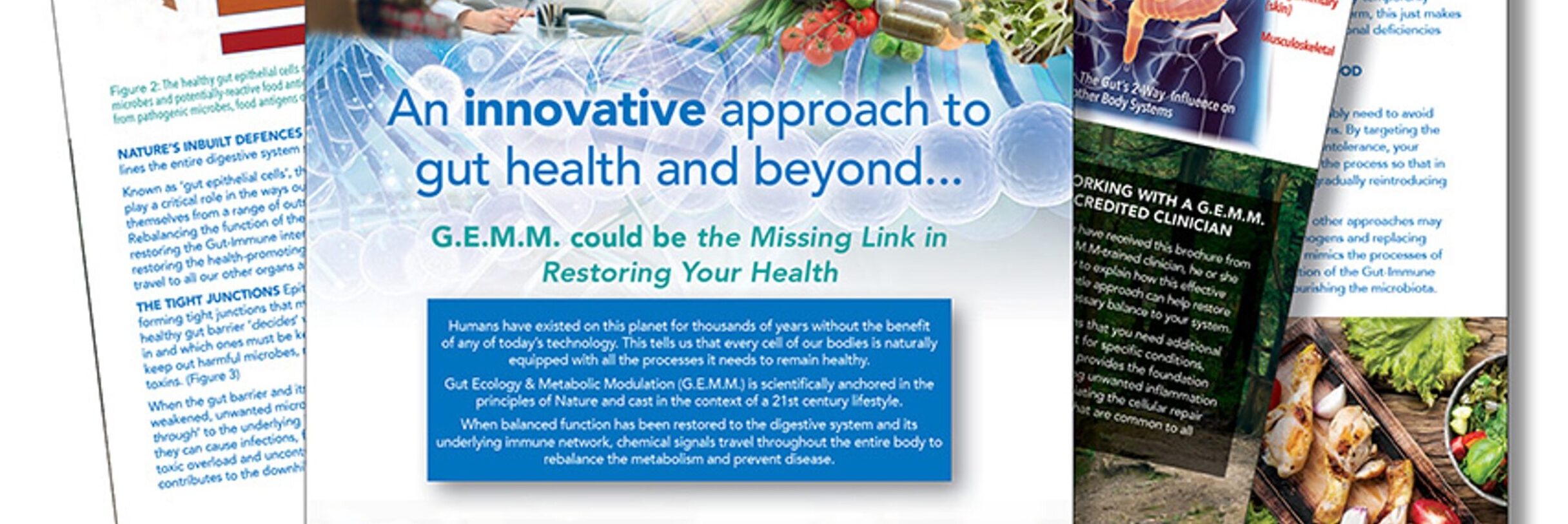Yesterday I had a discussion with my scientist’ friends who are buying into the doom and gloom of prospective solutions in the current world-situation that wants us to believe that only if we are rescued by the roll-out of big pharma will this ever end. They firmly believe that this is the only way to go. Who am I to tell them what to believe?
But it occurs to me that conventional medicine, backed by the pharma-industry has only been practicing in its current form for around 100 years. It began with Abraham Flexner being commissioned by the Rockefeller Foundation to write a report. Flexner’s’ report subsequently led to the closure of almost 80% of the training facilities in the complementary medical field.
In the eighteenth and nineteenth century a wide range of medical schools existed in the United States of America and Canada, teaching various forms of medicine that included homeopathic, chiropractic, osteopathic and eclectic schools of medicine. Although Europe, in particular Germany and France, already implemented scientific studies in anatomy, physiology, pathology and medicinal chemistry in their Universities, America and Canada were still relying heavily on traditional methods of healing that included bloodletting, leeches, and purging. Homeopathic, eclectic, and herbal schools were numerous and their method in treatment highly popular at the time.
In 1907 the Carnegie Foundation for the Advancement of Teaching in Washington commissioned, under the umbrella of Rockefeller Foundation, a report that would change medical history and transform modern universities, colleges, and hospitals. This report was written by Abraham Flexner, who was trained in natural sciences at the prestigious Johns Hopkins University in Baltimore. Although he was not trained as a physician his education included a German-style, research-oriented education that included intensive laboratory work and followed rigorous training in scientific experimentation on both graduates and undergraduate levels. The underlying rule of the scientific principle of the early 20th century was based on materialism or physicalism that all facts including facts about the human mind are causally dependent upon physical processes. Flexner and the medical system based their reductionist view on this governing truth which translates in medical terms to ‘all treatment has to be proven to be effective by an exact point of science or research’.
Shaped by his education he pursued the quest given to him by the Carnegie Foundation to assess all 155 medical schools at the time following the guidelines of the stringent standards of John Hopkins scientific paradigm of medical education and research. Anyone falling short of his ideals of medical education was labelled illegitimate and non-scientific with little consideration given to the different approaches of medicine that were practiced during that time. Flexner’s’ report subsequently led to the closure of almost 80% of the training facilities in the complementary medical field. Flexner’s’ elaboration of incompetence and ineffectiveness of homeopathic schools was supported by Dr. William Osler and others, all alumni of the Hopkins University Medical School who emphasized on the efficiency of pharmacology, and the lack of biomedical research facilities in those schools. His report didn’t spare leading medical schools, for instance, The Pennsylvania Hospital in Philadelphia and Palmer’s Chiropractic School in Davenport which was teaching and practicing a patient-centred and modern form of community medicine (Stahnisch and Verhoef 2012).
The report of Flexner highlighted the need to implement certain universal principles of medical education and effective teaching methods in many medical teaching facilities that weren’t up to par with even minimal standards and it undoubtedly aimed to improve the quality of medical care. Following the report research activities in the field of biomedicine were expanded substantially during the period of 1900 and 1930 in the United States of America and Canada. Emphasis was placed on academic psychiatry, internal medicine and integration of laboratory-based pathology and was heavily funded by The Rockefeller Foundation and the Carnegie Foundation for the Advancement of Teaching in New York City. Simultaneously universities, colleges and hospitals were transformed, and anyone opposed to the science-paradigm had to close their premises (Stahnisch and Verhoef 2012). By 1927 less than a dozen naturopathic schools remained in existence.
In conjunction with the rise of biomedicine pharmaceutical drug development occurred. Newly developed pharmaceutical drugs were the solution to many illnesses and health problems that plagued the world-population at that time. However, research became increasingly more important than teaching, caring for patients and addressing the broader spectrum of the human state of disease. Interestingly Flexner himself has stated that the medical curriculum overweighed the scientific aspects of medicine to the exclusion of the social and humanistic aspects (Cooke et al 2006).
Beginning in the 1960s, an increasing number of people in developed countries worldwide began to be disillusioned with conventional medical care. Although having experienced biomedicine as a reliable form of symptomatic treatment many began to search for therapies that would address chronic illnesses such as chronic fatigue syndrome, diabetes, chronic depression, HIV, and cancer and that were less toxic and more effective than modern medicine. From being disempowered as patients of almighty medical doctors, an increasing need for medical care arose that allowed a healing partnership, responsibility on part of the patient and more time spent in consultations (Gordon 2004). More recent data from surveys indicate an increase of use of CAM therapies between 1990 and 1997 with an estimated total number of visits of 45% of the population in the United States alone (Eisenberg et al. 2001)
In 1998 Spiegel wrote a comprehensive article on the successes of complementary and alternative (CAM) therapies applied in conjunction with conventional treatment in biomedicine linking the psychotherapeutic model to survival advantages of cancer patients in randomized trials. In 1998 there were at least 27 medical centres, on top of Stanford, that had complementary medicine programs of various origins, including mindfulness meditation, homoeopathy, acupuncture, Chinese herbs among others (Spiegel 1998).
Despite the shortcomings in comparison to research quantity and quality in biomedicine, more research papers are being published in CAM in the 21st Century than ever before. Associations like the Australian Traditional Medicine Society (ATMS) or the National Herbalists Association of Australia (NHAA) have not only published research articles in complementary medicine but also represent professional practitioners of natural medicine, who are encouraged to pursue the highest ideals of professionalism in their natural medicine practice and education.
As unfortunately during Flexner’s’ time there is still several biomedical academia that would have complementary medicine banned from universities where, in the latest Australian governments’ medical education development, more universities offer degrees in naturopathy, Chinese traditional medicine, acupuncture and osteopathy. Holding steadfastly to the bioscience model of medicine with the edict that only researched methods should be allowed to be taught in Universities, they fail to understand that by integrating complementary medicine into the mainstream educational paths, research will become more accessible to complementary medicine (MacLennan et al. 2012).
In complementary medicine it may not be possible to fully comply with the research designs set by modern medicine as nature’s medicine can never be replicated without a variation. For instance garlic may be planted in the same soil, at the same time of the year and harvested at the same time, but it will still have adapted to changes in its environment, such as the weather, and will have variants that can’t be controlled. And that’s exactly where it’s strength lies. Microbes will never become resistant to garlic as harvested crops will each have a unique variant from the one before. For instance it has shown to be more effective than antibiotics to help the body to overcome food-borne illness (Washington State University).
So how did humans survive for thousands of years before the rise of modern medicine a bit more than a hundred years ago? Modern medicine has been an absolute blessing in its capacity to diagnose and intervene in life-threatening illnesses with ongoing research, state-of-the-art technology and methodology. However – simultaneously the ongoing indoctrination that he human body can’t give birth, nor can survive the constant onslaught of viruses and bacteria without the help of “modern” medicine has deprived many of care, that would have been much less invasive, side-effect free and more efficient.
There are an increasing number of medical doctors that have become advocates of complementary methods and acknowledge their efficacy even if it cannot be penned into a research paper. Many conventionally trained medical doctors are practising integrated medicine or are including complementary therapies as part of their healing programs for patients. Body Mind Medicine is another branch of medicine that has increased its popularity among researchers in the field of stress-management and is supported by research data suggesting its efficacy in improving for instance life-expectancy and life-quality in cancer-patients (Spiegel 1998).
I believe – as a holistic health care professional – to truly be of service to our patients or clients, we need to put our differences aside and work together. I know that nutritional- and herbal intervention plus body-mind medicine combined with state-of-the art modern medicine, wherever it’s necessary, will work way more efficiently than what we are being conditioned to believe via media namely “that only the one drug will save us all”.
Flexner may well have welcomed the emerging trend of using both, orthodox and complementary medicine to benefit the one modality often buried in academic discourse – the human being whose health is out of balance.
Written by Monika Ramasamy, 1st February 2021
Works Cited
- Cooke, M., Irby, D., Sullivan, W., & Ludmerer, K. (2006). American Medical Education 100 Years after the Flexner Report. Retrieved August 2, 2015, from The New England Journal of Medicine; 355:1339-44. Massachusetts Medical Society: http://fm.usp.br/cedem/did/preceptores/REF1A_Flexner_100_years_NEJM_2006.pdf
- Eisenberg, D. M., Kessler, R. C., Van Rompay, M. I., Kaptchuk, T. J., Wilkey, S. A., Appel, S., et al. (2001). Perceptions about Complementry Therapies Relative to Conventional therapies among adults who use both: Results from a National Survey. Retrieved August 4, 2015, from American College of Physicians-Amercian Society of Internal Medicine; 135:344-351: http://www.researchgate.net/publication/11815837_Perceptions_about_complementary_therapies_relative_to_conventional_therapies_among_adults_who_use_both_Results_froma_national_survey
- Ernst, E., Cohen, M. H., & Stone, J. (2004). Ethical problems arising in evidence based complementary and alternative medicine. Retrieved September 14, 2015, from J Med Ethics; 30:2 156-159 doi:10.1136/jme.2003.007021: http://jme.bmj.com/content/30/2/156.full
- Gordon, J. S. (2004, Sept/Oct). THE WHITE HOUSE COMMISSION ON COMPLEMENTARY AND ALTERNATIVE MEDICINE POLICY AND THE FUTURE OF HEALTHCARE. Retrieved September 10, 2015, from White House Commission Report. Alternative Therapies Health; Vol. 10; No. 5 20-23: http://crawl.prod.proquest.com.s3.amazonaws.com/fpcache/8a33ff70dc779937f4a34ab2d32cfe4f.pdf?AWSAccessKeyId=AKIAJF7V7KNV2KKY2NUQ&Expires=1442299079&Signature=6E0dokG2l11Lt4ss50UnWqmE8Lg%3D
- MacLennan, A. H., & Morrison, R. G. (2012, March 5). Tertiary education institutions schould not offer pseudoscientific medical courses Standing up for science. Retrieved August 4, 2015, from Editorial. MJA 196 (4): https://www.mja.com.au/system/files/issues/196_04_050312/mcl101128_fm.pdf
- Spiegel, D., Stroud, P., & Fyfe, A. (1998, April). Complementary Medicine. Retrieved October 5, 2015, from Stanford University School of Medicine: http://www.ncbi.nlm. nih.gov/pmc/articles/PMC1304947/pdf/westjmed00331-0015.pdf
- Stahnisch, F. W., & Verhoef, M. (2012, September 17). The Flexner Report of 1910 and Its Impact on Complementary and Alternative Medicine and Psychiatry in North America in the 20th Century. Retrieved September 15, 2015, from Evidence-Based Complementary and Alternative Medicine, vol. 2012, Article ID 647896, 10 pages: http://www.hindawi.com/journals/ecam/2012/647896/
- Washington State University. “Garlic compound fights source of food-borne illness better than antibiotics.” ScienceDaily. ScienceDaily, 1 May 2012 <www.sciencedaily.com/releases/2012/05/120501134203.htm>.




